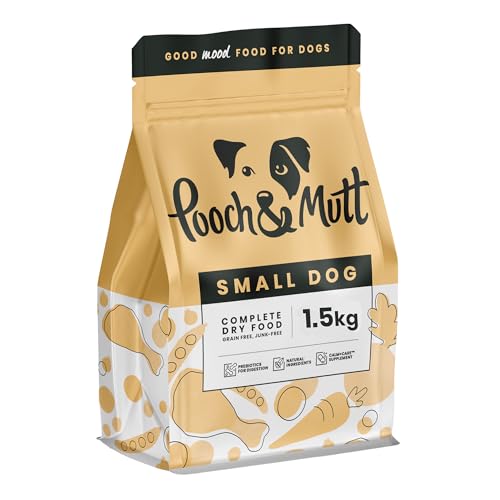Understanding Dog Kibble: What Are the Basics We Need to Know?
What is Dog Kibble?
Dog kibble is a type of dry pet food that is typically composed of a combination of meat, grains, vegetables, and added vitamins and minerals. Unlike wet dog food, kibble is designed to be lightweight and convenient, making it a popular choice for dog owners. The production process usually involves cooking ingredients and then extruding them into small, bite-sized pieces, which are then dried. This shelf-stable food can easily be stored and served at any time, ensuring that we always have nutritious meals ready for our furry companions.
Why Choose Kibble?
Kibble offers several advantages that make it a preferred choice for many dog owners. It is cost-effective, as a single bag can provide a substantial amount of food compared to fresh alternatives. Additionally, the crunchiness of kibble can help keep our dog’s teeth clean by reducing plaque buildup. This convenience extends to meal preparation, as kibble can be served straight from the bag without the need for refrigeration. For many dogs, the taste of kibble is appealing, making it easy for us to ensure they get the nutrition they need.
Choosing the Right Ingredients: What to Look for in Dog Kibble
Protein Sources
When selecting dog kibble, one of the key elements to focus on is the protein source. Dogs are primarily carnivorous, which means they thrive on high-protein diets. Look for kibble that lists real meat, such as chicken, lamb, or beef, as the first ingredient. Ingredients like meat meals, which contain concentrated protein from animals, are also good choices as they provide higher protein levels. Avoid kibbles that use vague terms like “meat by-products,” as these can be less desirable.
Whole Grains versus Grain-free
Another consideration is the type of carbohydrates included in the kibble. Whole grains like brown rice, barley, and oats can provide essential nutrients and are generally easily digestible for dogs. Conversely, grain-free options often feature alternative sources of carbohydrates, such as potatoes or peas, which can be a good fit for dogs with specific dietary sensitivities. The choice between whole grains and grain-free ultimately depends on our dog’s individual health and preferences.
Additives and Preservatives
Products that include natural preservatives like tocopherols (vitamin E) or ascorbic acid (vitamin C) are preferable over those infused with synthetic chemicals. Look out for artificial colours, flavours, and preservatives in the ingredient list, as these can be unnecessary and potentially harmful to our pets.
Different Types of Dog Kibble: Which One Suits Our Pet’s Needs?
Adult vs. Puppy Kibble
Different life stages require different nutritional balances. Puppy kibble is formulated with higher protein and fat levels to support fast growth and development. It’s usually richer in vitamins and minerals compared to adult dog kibble, which focuses on maintaining health and weight. If we have a young one at home, we should opt for puppy-specific formulas until they reach adulthood.
Specialty Kibble
Some dogs have unique dietary needs due to health conditions like allergies, sensitivities, or obesity. In these cases, we can find specialty kibble aimed at addressing these specific requirements. Options include hypoallergenic dog food for sensitive dogs, weight management formulations for those who need to shed some pounds, and even prescription diets for dogs with particular medical issues. Choosing the right specialty kibble can help support our dog’s overall health.
Feeding Guidelines: How Much Kibble Should We Give Our Dog?
Checking the Packaging
Feeding our dog the correct amount of kibble is essential for their health. Most kibble brands provide feeding guidelines on the packaging based on the dog’s weight, age, and activity level. These guidelines offer a good starting point to determine the right portion sizes. It’s important that we monitor our dog’s body condition and adjust based on their individual needs, ensuring they remain at a healthy weight.
Consistency is Key
When developing a feeding routine, consistency is crucial. We should aim to establish specific feeding times and stick to them, as this helps regulate our dog’s digestive system and reduces the risk of obesity. Dividing the daily recommended amount into two meals rather than one can also aid digestion and prevent bloating.
Top Dog Kibble Brands: Our Recommendations for Quality Choices
Quality Ingredients
When it comes to purchasing dog kibble, several brands stand out due to their commitment to quality ingredients and nutrition. Brands such as Company A, Company B, and Company C have gained popularity among dog owners for their formulations that prioritise natural ingredients and balanced nutrition. They are known for using high-quality protein sources, whole grains, and avoiding artificial additives, which align well with the requirements set out previously.
Customer Reviews and Trustworthiness
Before we make our choice, it’s beneficial to review what other dog owners have to say about their experiences with these brands. Positive customer feedback often highlights improvements in pet health and satisfaction levels, which validates our selection. Looking for brands that maintain transparency regarding their ingredient sourcing and manufacturing processes can also increase our confidence in making a choice for our furry friends.
































